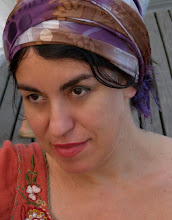I'm fascinated by the ways in which neuroscientists work towards erasing traumatic memories through basically “deleting” the fear response, neutralizing an emotion. That led me to more research on the other end of the spectrum: enhancing human memory. The next step in my research was obvious: posthumanism and transhumanism – the merging of humans and machines/computers, the notion of upgrading humans through artificial intelligence and computer science.
This is not SF, things are actually happening: Professor Kevin Warwick has already experimented with computerized chips inserted into his arm and the possibility of moving objects through brain impulses sent to that chip and beyond. He even communicated with his wife “brain to brain” declaring language and speech obsolete and humans on their way of becoming a subspecies as Virtual Reality will take over, a “reality” where we have more choices, we can choose our bodies like we choose our clothes in the current physical space.
“In the virtual world you will meet with either real people or simulated people – eventually there won’t be much difference”, writes Ray Kurzweil (an award winning computer scientist and author whose inventions include reading machines for the blind, speech-recognition technology and the cybernetic poet) in “The age of spiritual machines – When computers exceed human intelligence”.
Yes, we all remember the movie MATRIX, but that SF reality is closer now than we think. And, at the opposite pole, we remember Ted Kaczynski, the “unabomber”, a formerly genius scientist who advocated for the simple return to nature. Well, unfortunately he “spiced up” his manifestos with some unnecessary terrorist activity…
However, regular people are buying into the “posthuman” frenzy too, here’s what Max Moore writes on his website “On becoming Posthuman”:
“The merging of human and machine is clear to those who survey the arena. Machines are becoming more organic, self-modifying, and intelligent. Driving these developments are fields such as artificial life, neural networks, fuzzy logic, intelligent agents, and machine intelligence. At the same time, we are beginning to incorporate our technology into our selves. We began with pacemakers, artificial joints, and contact lenses. Artificial retinas are under development, and signals have successfully been passed back and forth between a neuron in vitro and a field effect transistor. The researchers suggest the next step is to connect up an array of neurons and electronic components. Computers and their interfaces rapidly evolve to fit us: From mainframes and text-based interfaces to PCs and GUIs, PDAs, voice-recognition, and knowbots. How long before our computers are implanted in our brains, as seamlessly integrated into our cognition as an extra hemisphere? Maybe 10 years, maybe 50 or 60, but it's coming.
Some fear that life will lose its meaningfulness without the traditional stages of life produced by aging and the certainty of death. Extropians regard such an attitude as an understandable rationalization, a mechanism for making the best of what has hitherto been inevitable. Certainly, the achievement of posthuman lifespans will require extensive revision of our way of life, our institutions, and our conception of our selves. Yet the effort is worth it. Limitless life offers new vistas, unexplored possibilities, unbounded self-development. Not only will agelessness and deathlessness not rob life of its meaning, I believe the contrary is true.”
Yes, the possibility to enhance human capabilities already exists. To harness the ever increasing abilities of machine intelligence, to enable extra sensory input and to communicate in a much richer way, using thought alone.
As I mentioned, Professor Kevin Warwick has taken the first steps on this path, using himself as a guinea pig test subject receiving, by surgical operation, technological implants connected to his central nervous system.
What happens when a man is merged with a computer?
This is the question that Professor Kevin Warwick and his team at the department of Cybernetics, University of Reading intend to answer with 'Project Cyborg'.
On Monday 24th August 1998, at 4:00pm, Professor Kevin Warwick underwent an operation to surgically implant a silicon chip transponder in his forearm.
This experiment allowed a computer to monitor Kevin Warwick as he moved through halls and offices of the Department of Cybernetics at the University of Reading, using a unique identifying signal emitted by the implanted chip. He could operate doors, lights, heaters and other computers without lifting a finger.
The age of neural implants has already started!
I could write lots of pages explaining why I am so interested in this huge dramatic conflict of our times: HUMAN vs POSTHUMAN. Some scientists consider this moment as important in our evolutionary process as the one at the beginning of life on Earth: the splitting in two of one-cell organisms. Now we are on the brink of humans merging with computers, biological intelligence merging with artificial intelligence. A huge step (forward?) in our progress.
I'm working on a play called ENHANCED that aims to explore this main dramatic conflict involving ethics, emotions, curiosity and the need for progress as my character ALMA, an aging neuroscientist, daughter of a Holocaust survivor, is contemplating crossing the personal line between human and posthuman.
